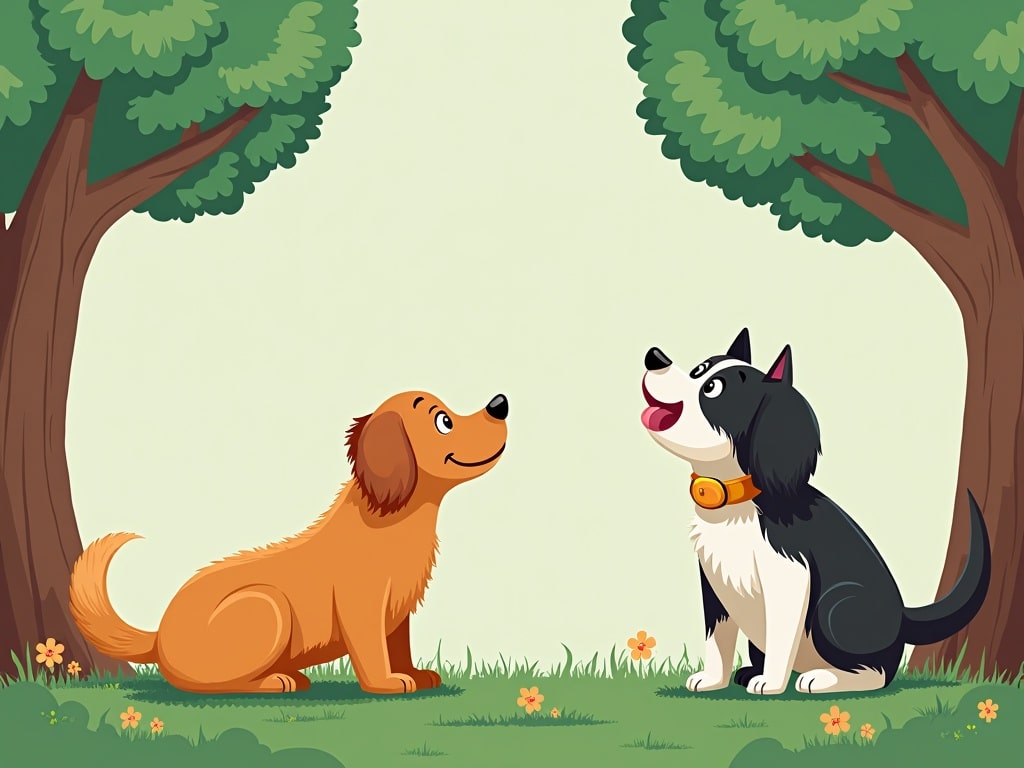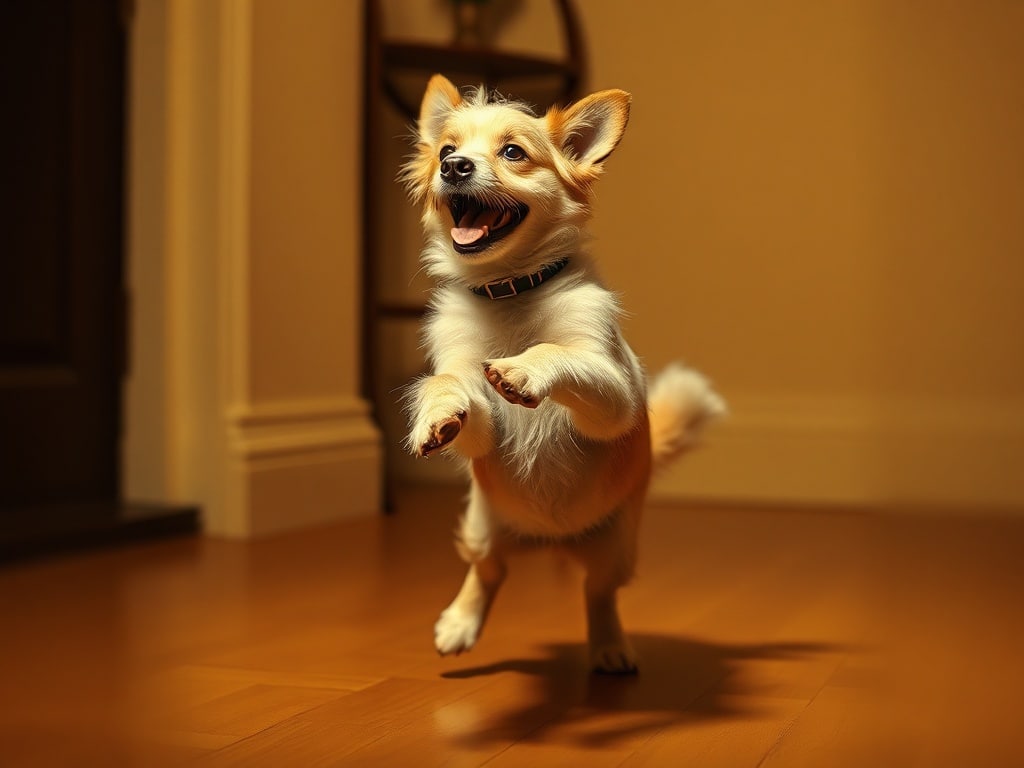Barking Up the Right Tree? Understanding How Body Language Predicts Potty Time
Ever felt like your dog speaks a language you just can’t quite grasp? You’re not alone. While barks and whines are audible clues, a wealth of information lies hidden in your dog’s dog body language before potty. Understanding these non-verbal cues is the key to unlocking smoother potty training, fewer accidents, and a deeper connection with your furry friend. Imagine being able to anticipate your dog’s needs before they even make a sound – that’s the power of decoding their body language.
This article will delve into the fascinating world of canine communication, focusing specifically on the subtle behaviors that signal it’s time for your dog to go potty. We’ll explore the various cues, how to differentiate them from other actions, and how to respond appropriately, ensuring a happier, cleaner, and more harmonious life for both you and your canine companion.
Understanding Canine Communication: Beyond Barks and Whines
Dogs communicate in a multitude of ways, and while vocalizations are part of the picture, dog body language before potty often speaks volumes. Think of a wagging tail, a perked ear, or a tucked tail – each tells a story. Body language is the primary way dogs communicate not only with us, but also with each other. It encompasses a wide range of signals, including posture, facial expressions, tail movements, and even subtle shifts in weight distribution.
This non-verbal communication is crucial for establishing social hierarchies, expressing emotions, and, most importantly for our purposes, indicating their need to relieve themselves. Mastering the art of reading these signals is essential for any dog owner, especially during the potty-training phase.

The Pre-Potty Dance: Unveiling the Secret Signals
What does the pre-potty dance actually look like? While it varies from dog to dog, certain behaviors are consistently associated with the urge to go. These include:
- Circling: This classic sign involves your dog walking in circles, often sniffing the ground as they go.
- Sniffing: Intense sniffing, especially in specific areas, can indicate they are searching for the perfect spot.
- Squatting (or Lifting a Leg): This is the most obvious sign, but it’s often preceded by other, more subtle cues.
- Pacing: Restlessness and an inability to settle down can be a sign they need to go outside.
- Whining: Some dogs will whine or vocalize when they need to relieve themselves, although this can also indicate other needs.
- Barking: In some instances, barking is a method of signaling if your dog needs to go outside. You can also use commands with positive reinforcement to manage this as well. Check out Beyond No Bark: The Quiet Command for a Calmer, Happier Dog for more information.
The reliability of these signs varies. Some dogs are incredibly consistent, while others are more subtle or exhibit different combinations of behaviors. The key is to observe your dog closely and learn their individual dog body language before potty style.
Decoding the Signals: A Detailed Breakdown
Let’s break down each of these signals in more detail:
- Circling: The intensity and speed of the circling can provide further clues. A frantic, rapid circling might indicate greater urgency.
- Sniffing: Pay attention to *whereyour dog is sniffing. Are they focused on a particular patch of grass, a corner of the room, or an object? This can reveal their preferred potty spot.
- Squatting (or Lifting a Leg): Observe their posture. Is it a full, committed squat, or a hesitant, partial one? Sometimes, they might start to squat and then stop, indicating they’re not quite ready.
- Pacing: Note the direction and pattern of their pacing. Are they pacing towards the door? Are they constantly changing direction?
- Whining: Is the whining accompanied by other signals, such as pacing or circling? This can help you differentiate it from whining due to boredom or attention-seeking.
- Barking: When barking is associated with the need to go potty it is usually short bursts. When barking becomes a problem is when you want to check if your dog is barking at other things.
Breed and Individual Variations: Every Dog is Unique
While there are general trends, breed and individual personality play a significant role in how dogs express their need to go potty. Certain breeds, known for their sensitivity, might be more demonstrative, while others are more stoic. Similarly, some individual dogs are naturally more communicative than others.
Don’t assume that what works for one dog will automatically work for another. Observe your own dog’s unique quirks and behaviors to decipher their personal potty language.
Distinguishing Potty Signals from Other Behaviors
One of the biggest challenges is differentiating pre-potty signals from signs of anxiety, hunger, or playfulness. For example, circling can also be a sign of anxiety or boredom. Sniffing can be related to exploration or searching for food. Whining can indicate pain, fear, or the desire for attention.
To accurately interpret your dog’s behavior, consider the context. What was happening just before they started exhibiting the behavior? Are there any other accompanying signals? The more you know about your dog’s habits and routines, the easier it will be to distinguish their potty cues from other types of communication.

Training Your Eye: Becoming a Canine Body Language Expert
Becoming adept at reading your dog’s dog body language before potty takes time and practice. Here are some practical tips to help you become a more observant owner:
- Record your observations: Keep a journal of your dog’s behavior before they go potty. Note the specific actions, the time of day, and any relevant circumstances.
- Watch videos: Record your dog’s behavior when you suspect they need to go out. Review the footage later to identify subtle cues you might have missed in the moment.
- Consult with a professional: A certified dog trainer or behaviorist can offer valuable insights and help you interpret your dog’s behavior more accurately.
- Be patient: It takes time to learn a new language, even if it’s the language of your dog. Don’t get discouraged if you make mistakes. Just keep observing, learning, and refining your understanding.
Responding Appropriately: Timing is Everything
Once you’ve recognized your dog’s pre-potty signals, it’s crucial to respond promptly and appropriately. The ideal response is to immediately take them outside to their designated potty spot. This reinforces the connection between their internal urge and the act of relieving themselves outdoors.
Timing is critical. The longer you wait, the more likely your dog is to have an accident indoors. If you’re too slow, they may also start to suppress their signals, making it harder to recognize them in the future. However, responding too quickly can also be counterproductive. Avoid interrupting them mid-action, as this could startle them or create negative associations with going potty.
Addressing False Alarms: When Circling Doesn’t Mean Potty
What happens if your dog gives you the I need to go potty signals, but then doesn’t actually do anything outside? This can be frustrating, but it’s important to handle the situation calmly and constructively.
First, make sure they truly don’t need to go. Wait a few minutes and encourage them to relieve themselves. If they still don’t go, take them back inside without any fanfare. Avoid giving them attention or treats, as this could reinforce the behavior. In the future, try to identify the triggers for these false alarms. Are they bored? Anxious? Are they simply trying to get your attention?
If false alarms become a frequent occurrence, consult with a veterinarian to rule out any underlying medical conditions. It is also suggested to take the dog out on a leash to help them understand it is all about making pee and poo and not about playing.
When Barking Becomes a Problem: Addressing Excessive Barking Related to Potty Needs
While some barking to signal potty needs is normal, excessive barking can become a nuisance. If your dog is constantly barking to go outside, it’s important to address the underlying cause. Are they truly needing to go out that frequently, or is the barking driven by anxiety, boredom, or attention-seeking?
Consult with a dog trainer or behaviorist to develop a plan to manage the barking. This might involve teaching a quiet command, providing more enrichment and exercise, or addressing any underlying anxieties. In some cases, medication may be necessary to manage anxiety-related barking.
Long-Term Benefits of Understanding Your Dog’s Body Language
Understanding your dog’s dog body language before potty offers numerous long-term benefits. It streamlines the potty-training process, reduces accidents, and prevents frustration. But more importantly, it strengthens the bond between you and your dog.
By learning to interpret their signals, you demonstrate that you understand and care about their needs. This fosters trust, deepens your connection, and helps you create a happier, healthier, and more harmonious relationship with your beloved canine companion. The ability to anticipate a need is the base on which every strong relationship thrives. So pay attention, and your dog will thank you for it!

